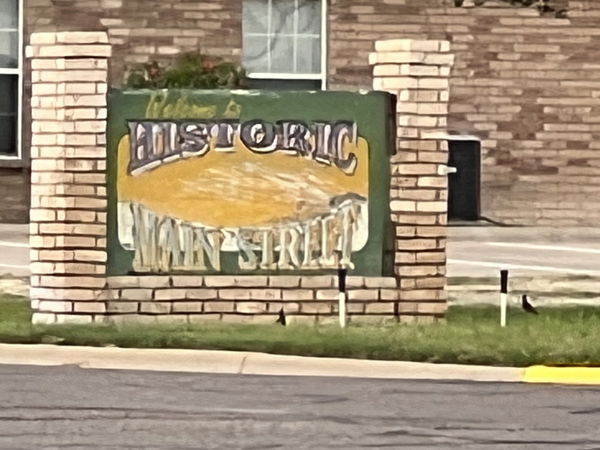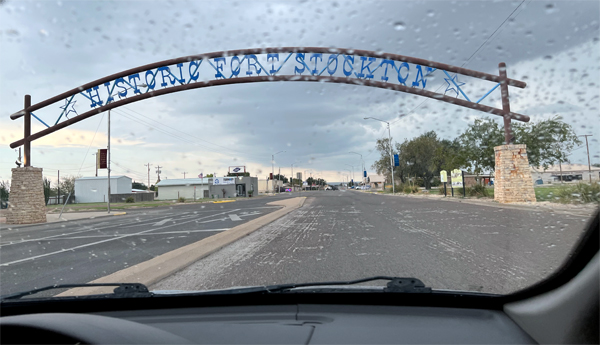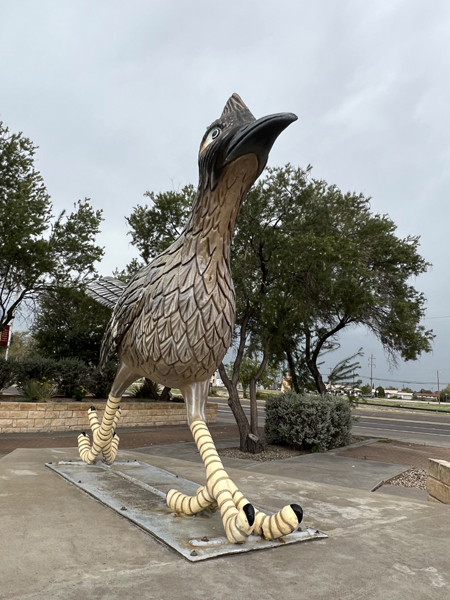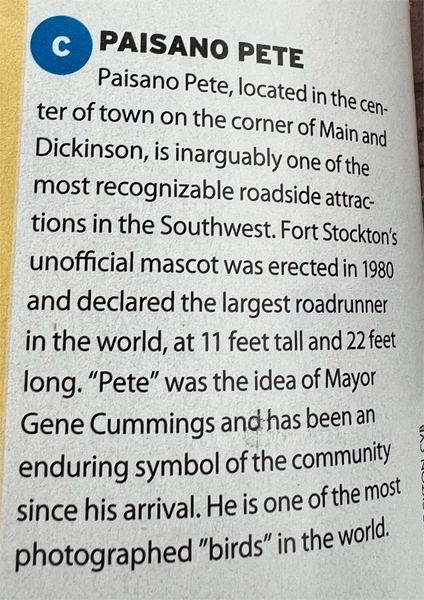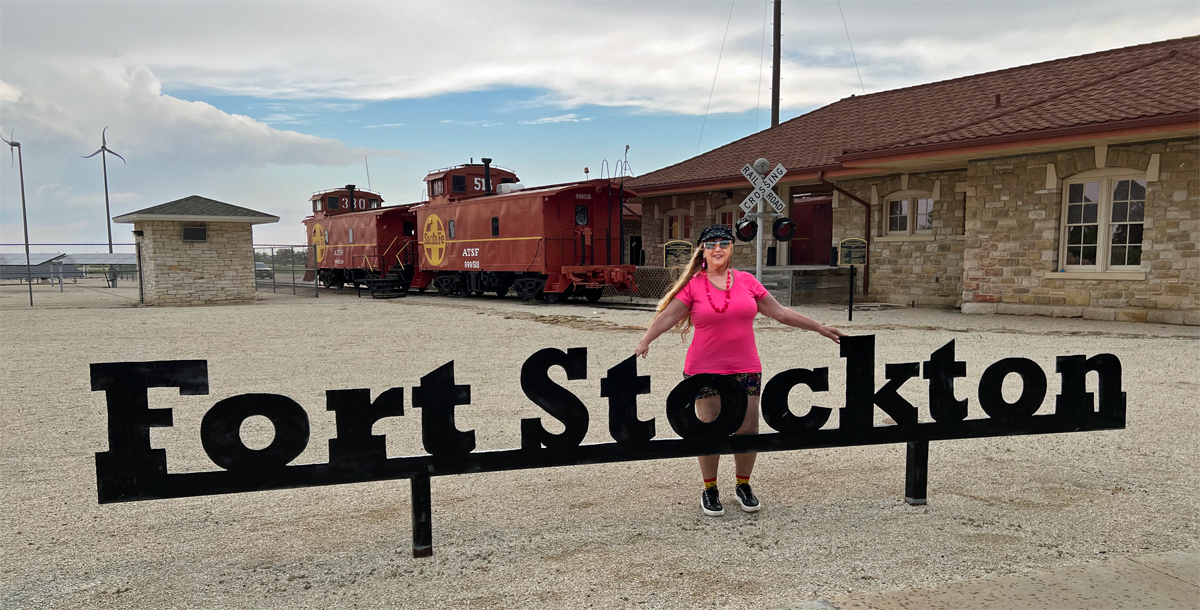Lee
and Karen Duquette,
The Two RV Gypsies
in Fort Stockton,Texas
September 15, 2022 |
Fort Stockton is a city in and the county
seat of Pecos County, Texas. It is located 329 miles northwest of San
Antonio and 240 miles southeast of El Paso. Fort Stockton is 100 miles
southwest of Midland International Airport. The town is within driving
distance of the Big Bend country, including Big Bend National Park,
137 miles, and the Big Bend Ranch State Park, 171 miles, as well as
the scenery of numerous day-drive locations in the area. |
|
|
|
Below: Paisano Pete - The second largest roadrunner
in the world. It stands Eleven-feet tall and 22-feet long. He is Fort
Stockton's mascot, because the bird is a common site in the area.
Paisano Pete welcomed the two RV Gypsies to his town.
|
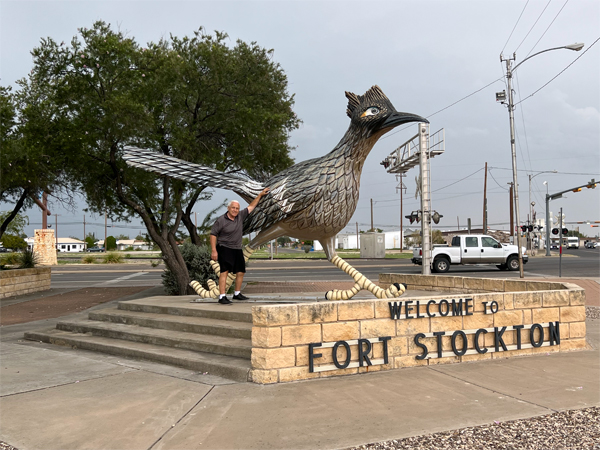 |
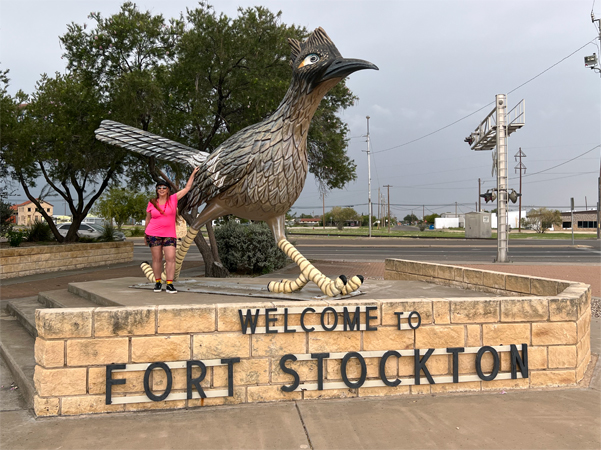 |
Paisano Pete was purchased
from a Wisconsin company for $6,250. The fiberglass statue was perched
in the center of town at the corner of Main Street and Dickinson Boulevard.
The city then held a “Name the Roadrunner” contest offering $50 to the
best suggestion, and after fielding a number of suggestions, Paisano
Pete was the winner.
|
|
|
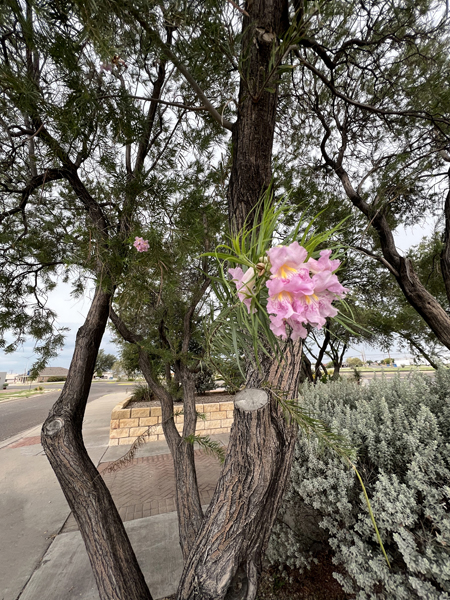
|
Below: The Fort Stockton
Visitor Center is the starting place to explore the historical sites
of Fort Stockton. It houses information regarding Fort Stockton, local
sites, and other tourism destinations including the self-guided historic
driving tour. Outside features a beautiful pond, silhouettes, a train
car, a pump jack, and other exhibits that symbolize Fort Stockton. It
is located in the original Kansas City, Mexico and Orient Railroad Depot
constructed in 1911. Unfortunately, it was closed when the two RV Gypsies
got here, so they were unable to go inside. But they did explore the
grounds. |
  |
Below: Roadrunners etched
in the door at the closed visitor center. |
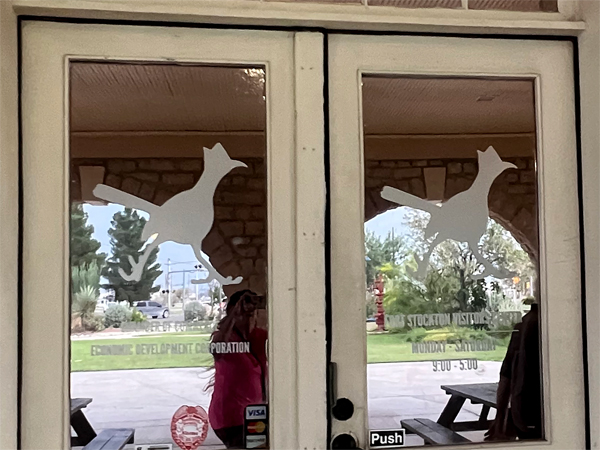 |
Below: The USA flag and the
Texas flag |
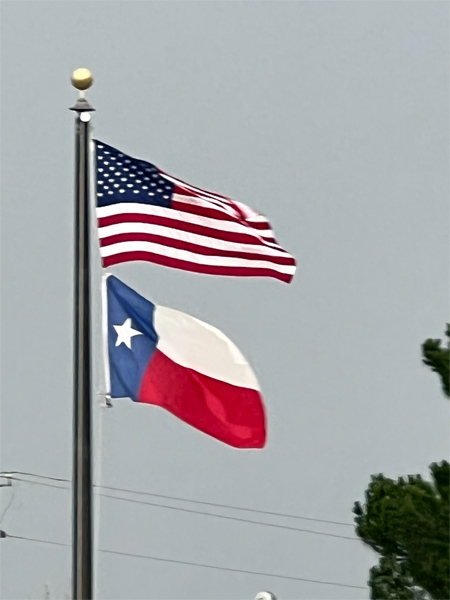 |
Below: The USA flag and the
Texas flag, and an oil well at the Visitor Center, as photographed from
different angles. |
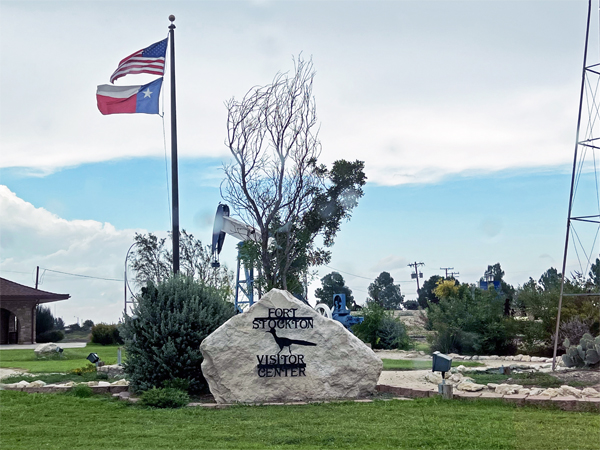 |
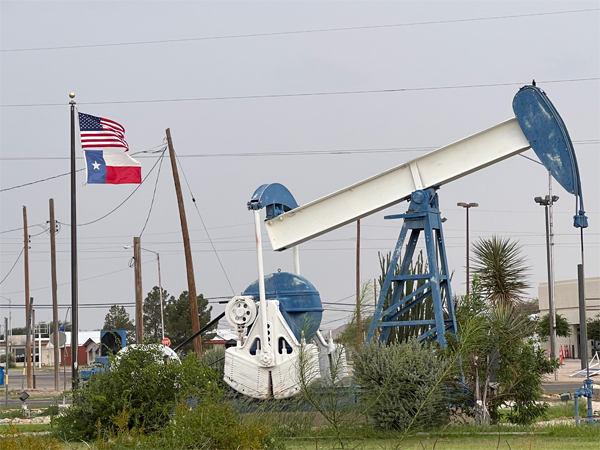 |
|
|
Below: Lee Duquette liked
the big Texas star embedded in the ground. |
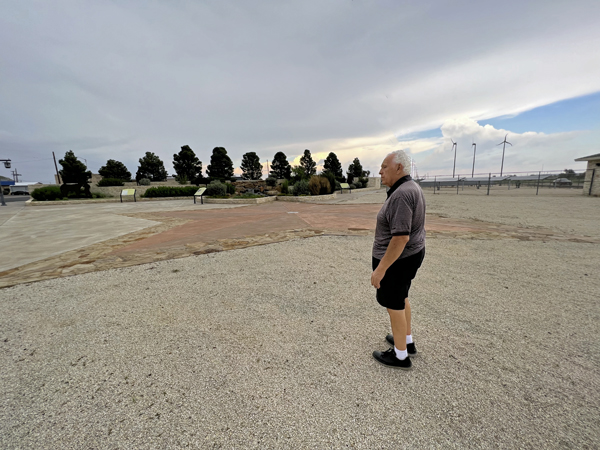 |
| |
Below:
Fort Lancaster sent 1st Infantry Co. H to take post along Comanche Springs
on 12 April 1859. Fort Stockton (named Camp Stockton until 1860) grew
up around Comanche Springs, one of the largest sources of spring water
in Texas. The fort was named for First Lieutenant Edward Dorsey Stockton
of the US 1st infantry, who died in San Antonio on March 13, 1857. Comanche
Springs was a favorite rest stop on the Great Comanche Trail to Chihuahua,
San Antonio-El Paso Road, and the Butterfield Overland Mail route. On
October 2, 1859, the well-known journalist and author (and future Union
spy) Albert D. Richardson passed through Camp Stockton, which he described
as "a military post of three or four edifices with pearly, misty
mountains in the background."
|
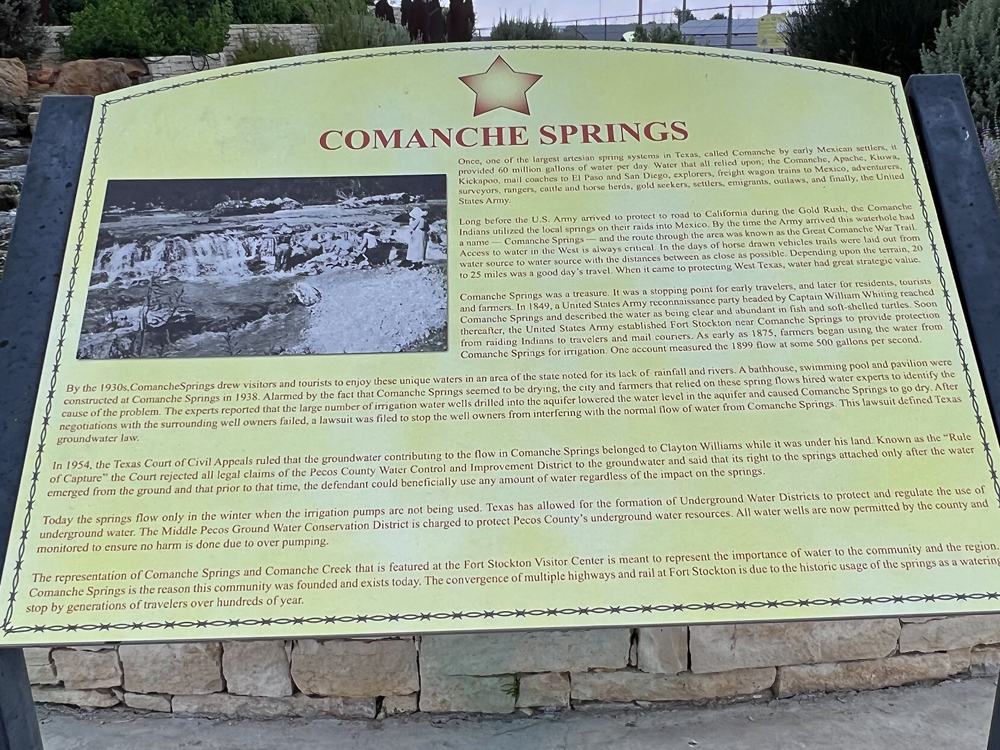 |
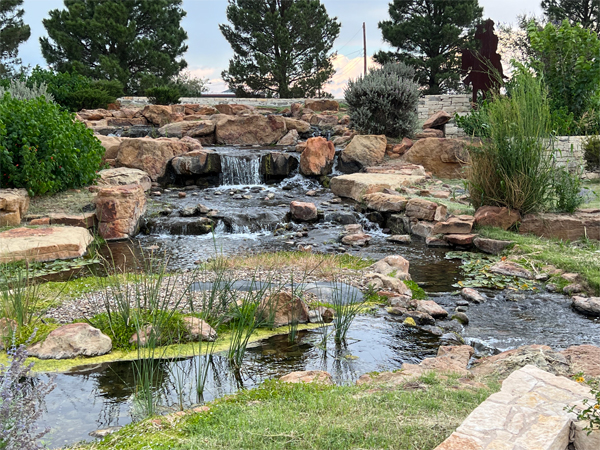 |
 |
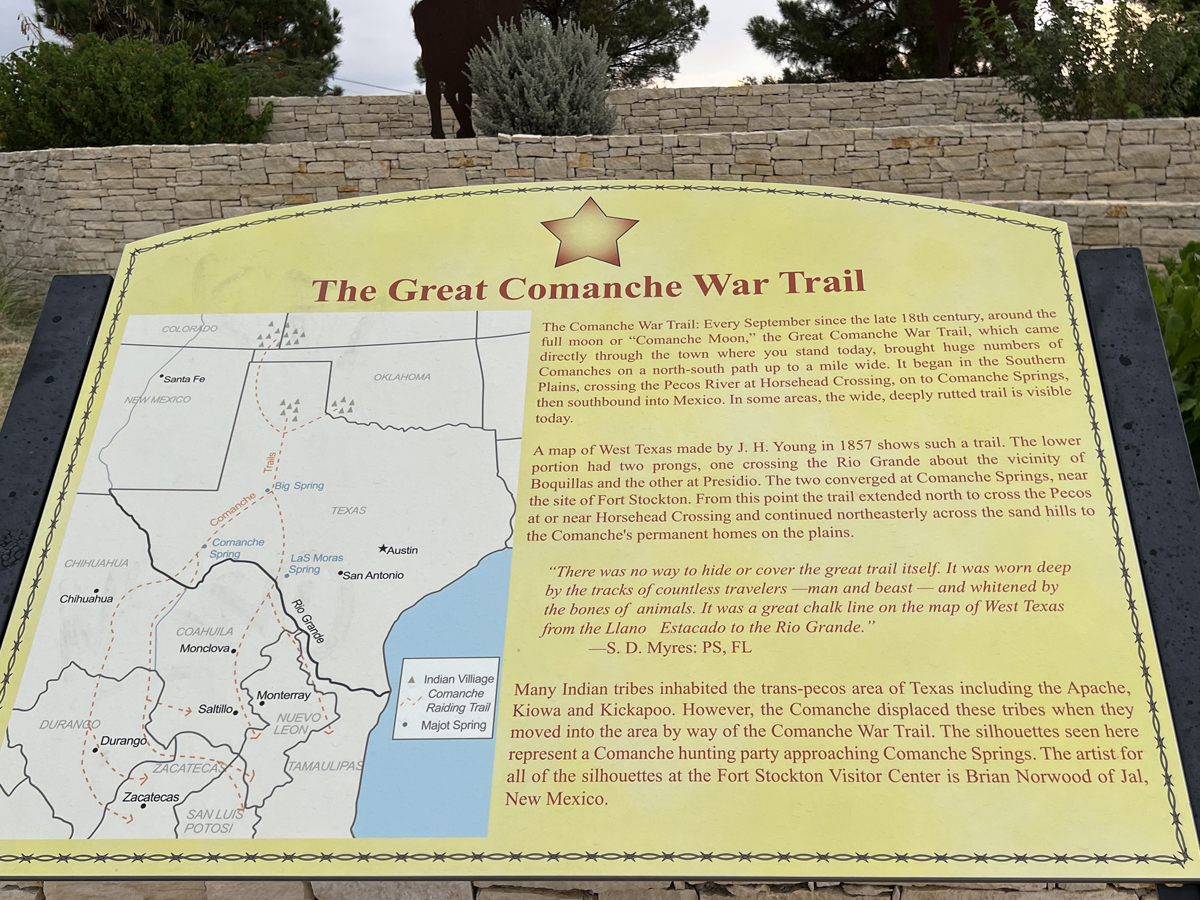 |
Below: Various silhouettes
representing a Commanche hunting party at Comanche Springs as described
above. |
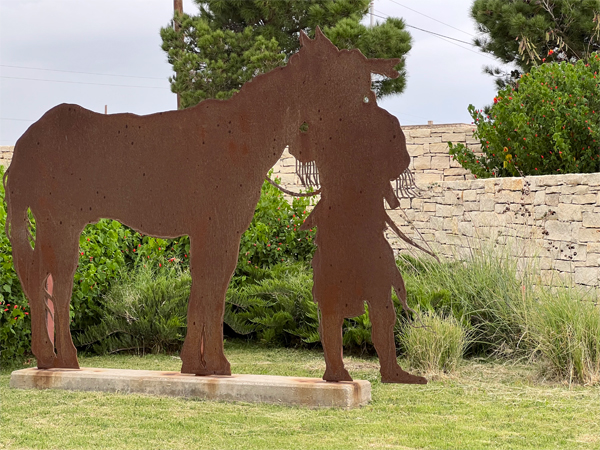 |
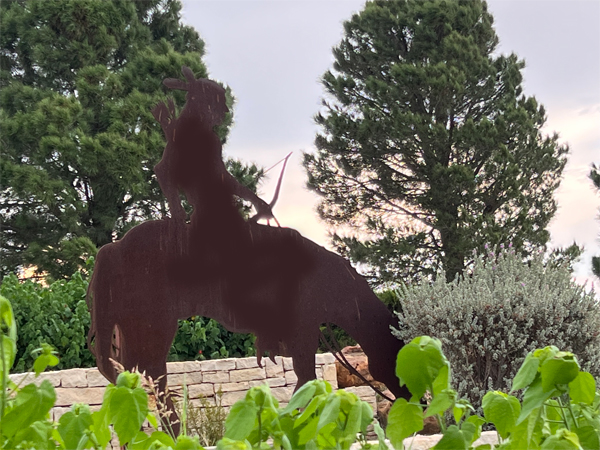 |
 |
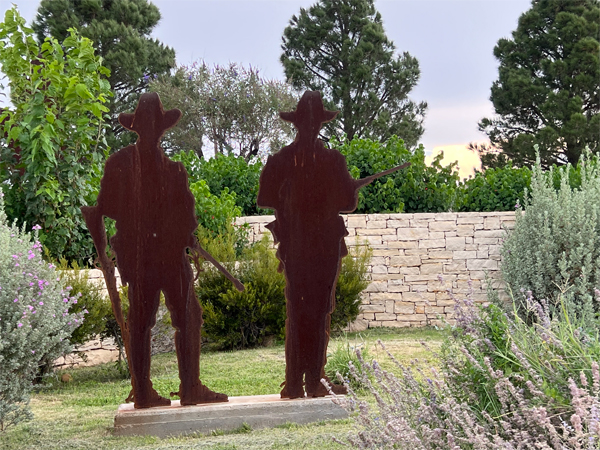 |
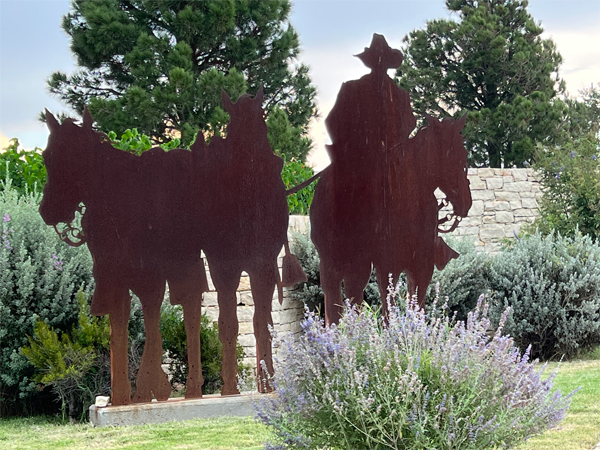 |
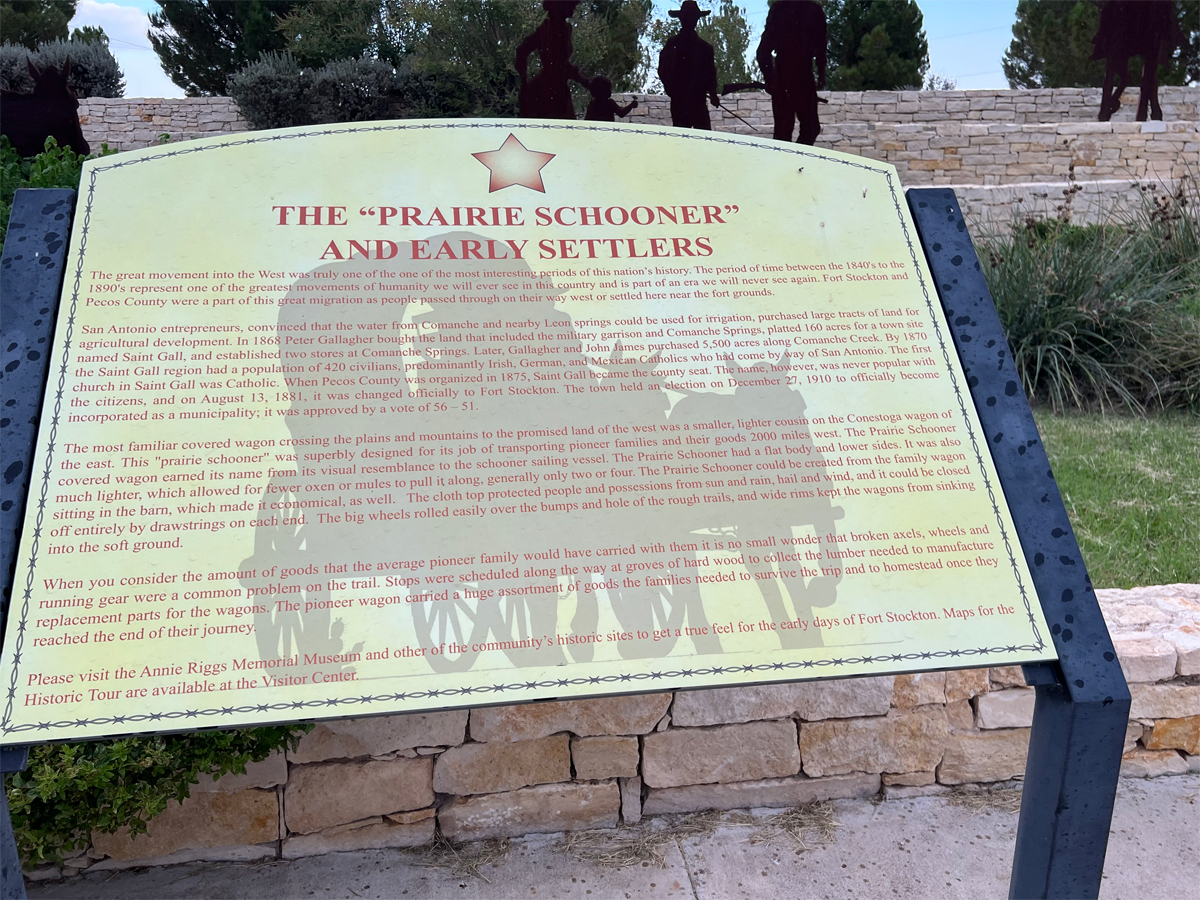 |
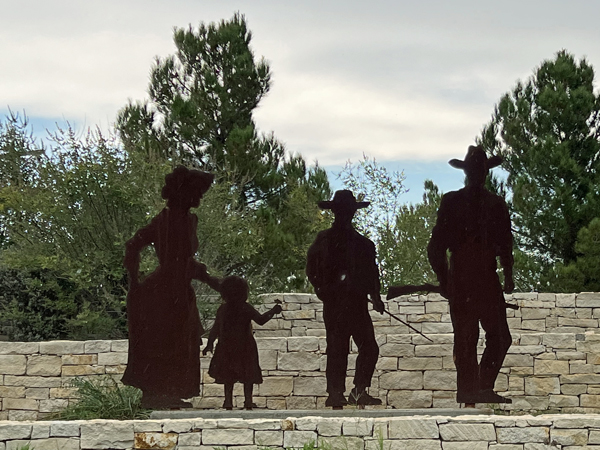 |
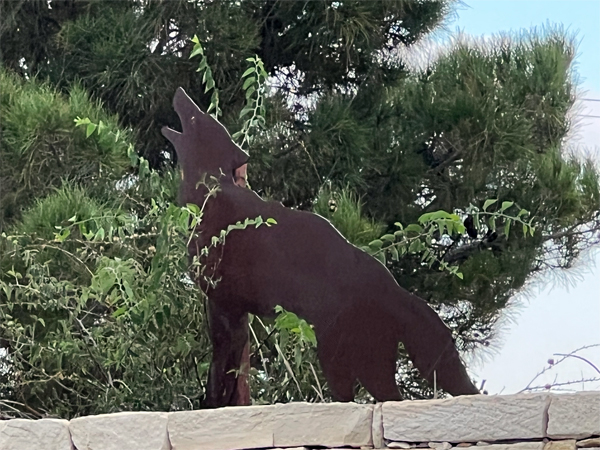 |
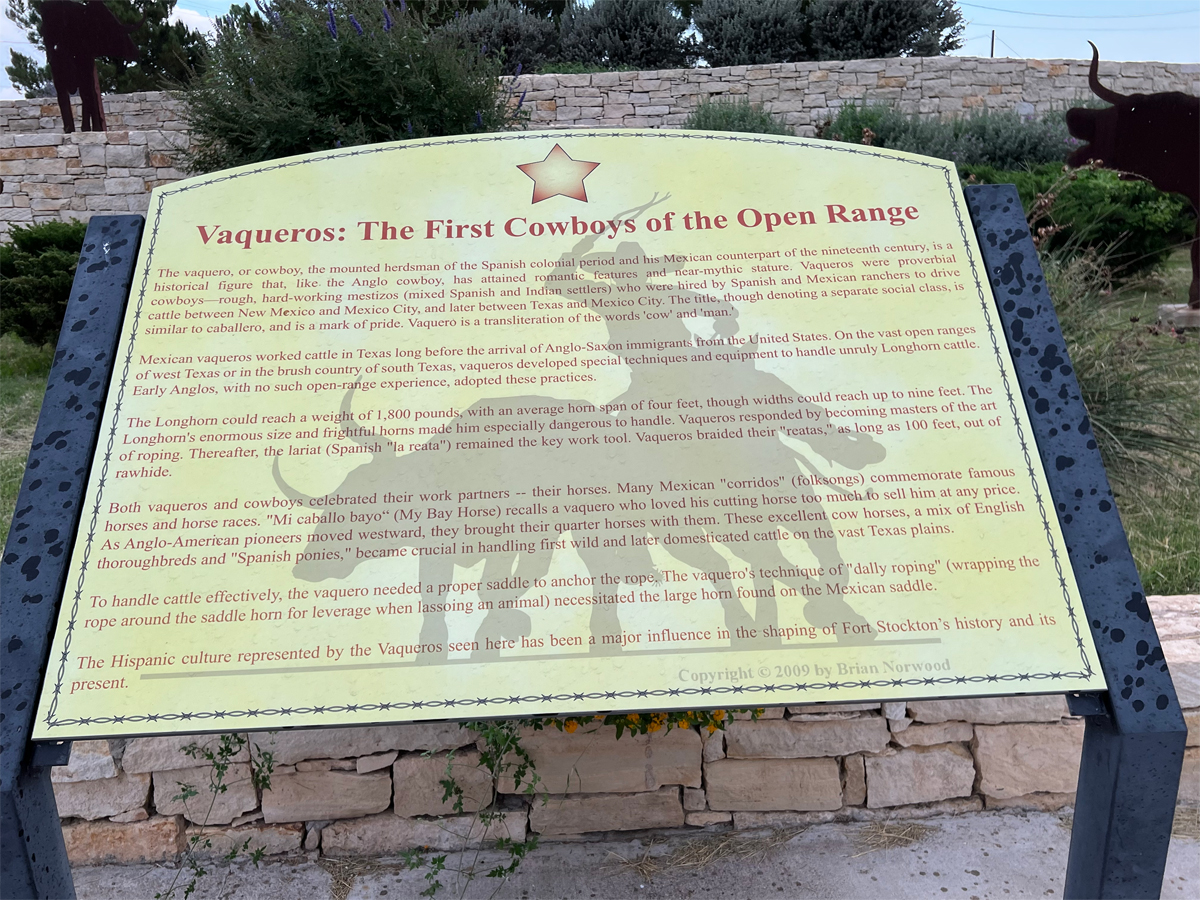 |
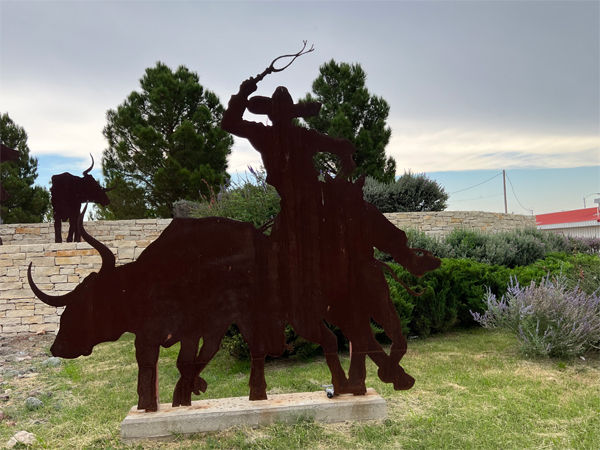 |
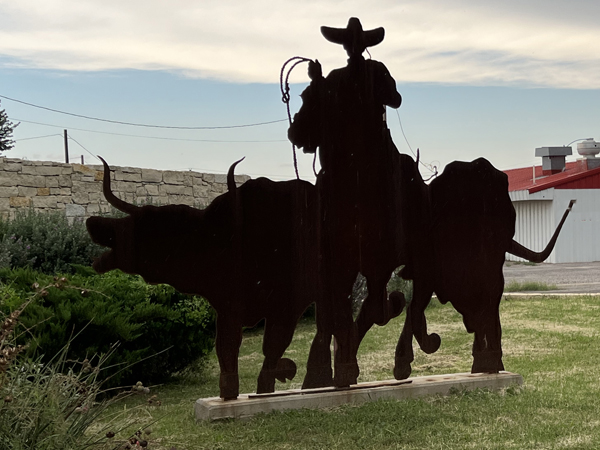 |
Below: Downtown Fort Stockton,
Texas |
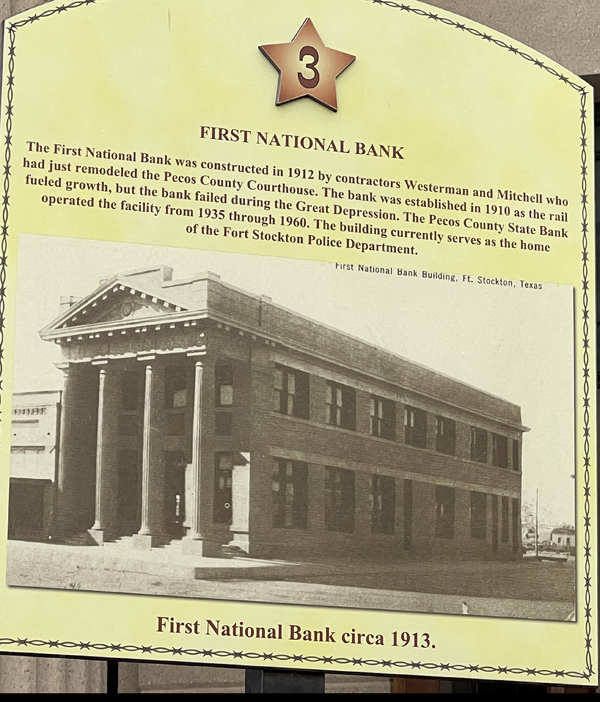 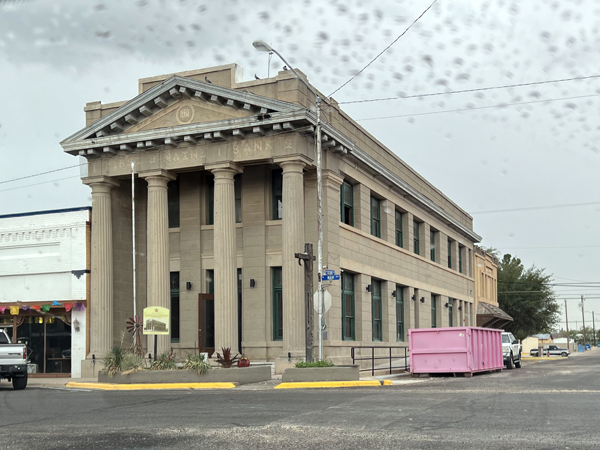 |
|
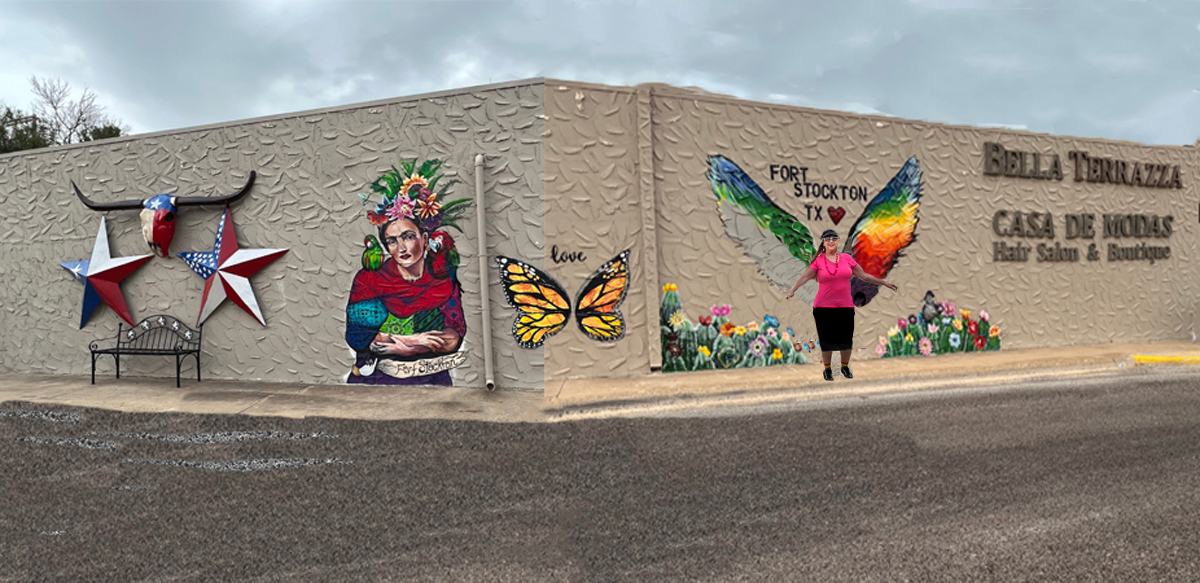 |
Below: The F. J. Ellyson Scout
Building Troop 54 BSA mural is adorned with a soft colored mural depicting
local history with the desert landscape as the setting. |
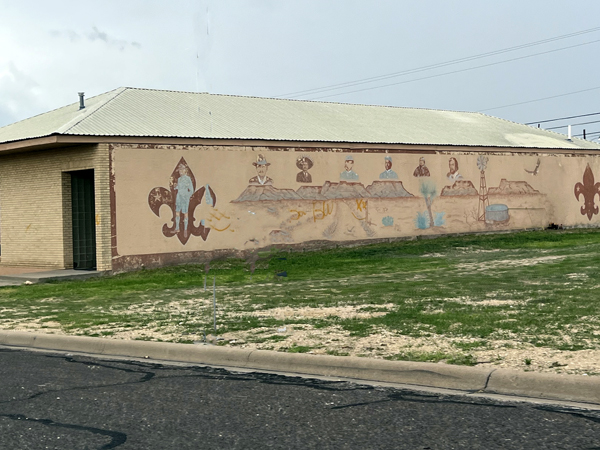 |
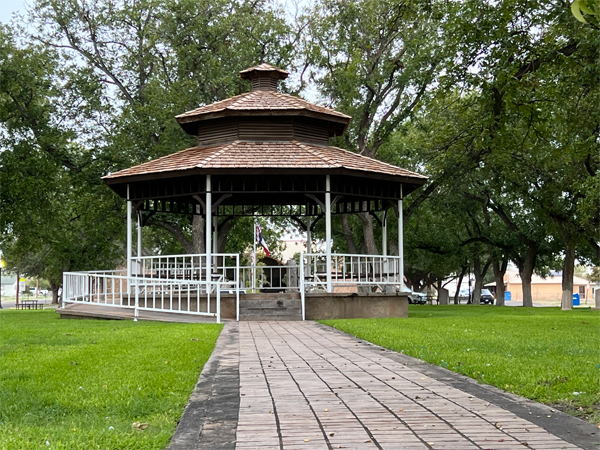 |
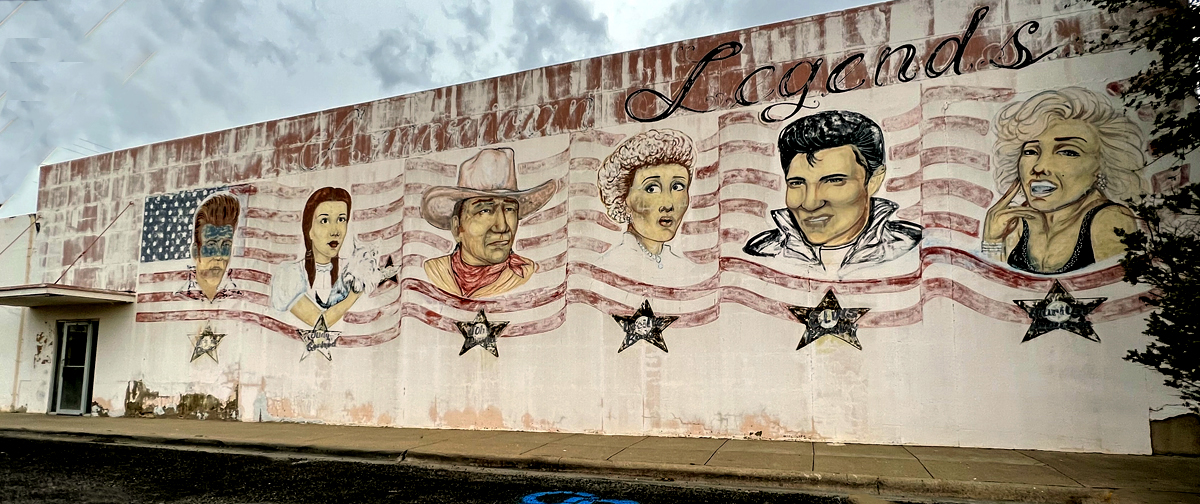 |
